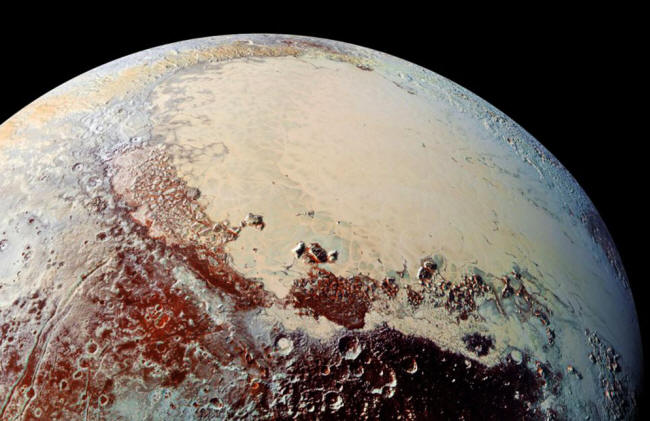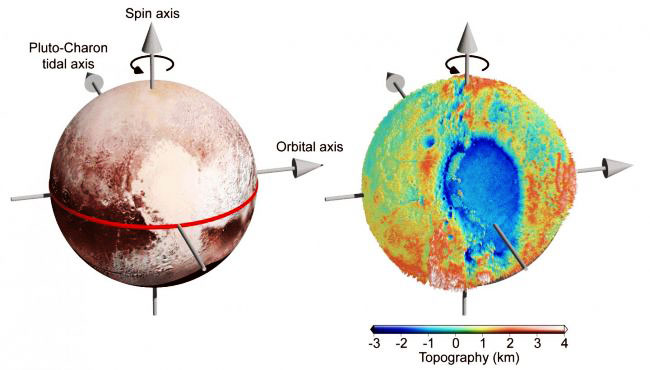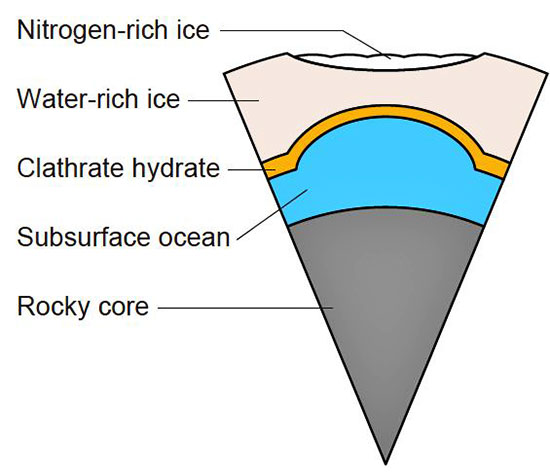|
was captured by NASA's New Horizons spacecraft
during
its flyby of the dwarf planet in July 2015. may keep buried water from freezing solid.
Buried oceans like the one thought
to slosh beneath the icy surface of the dwarf planet Pluto may be
incredibly common across the cosmos.
And something similar could be happening under the surfaces of frigid worlds in other solar systems as well, study team members said.
The bright “heart” on Pluto is located near the equator.
Its left half is a big basin dubbed Sputnik Planitia. by NASA/ Johns Hopkins University Applied Physics Laboratory/
Southwest Research Institute.)
A thin clathrate (gas) hydrate layer works as a thermal insulator between the subsurface ocean and the ice shell,
keeping
the ocean from freezing. Pluto's ocean is capped and insulated by gas hydrates.
Nature
Geosciences, May 20, 2019.)
Scientists think that
Pluto rolled into this orientation because of extra mass
concentrated at and near the surface in the Sputnik Planitia region.
After all, the dwarf
planet doesn't circle a gas giant, so its innards aren't roiled and
heated by tidal forces nearly as dramatically as are the insides of
Jupiter's moon
Europa and the Saturn satellite
Enceladus, both of which also
harbor subsurface oceans.
Shunichi Kamata
and his colleagues hypothesized that an insulating layer of "gas
hydrates" - ice-like solids composed of gases trapped within "cages"
of molecular water - beneath Pluto's ice shell might be responsible,
then performed computer simulations to test the idea.
But with the insulating
layer, the ocean persists to this day, the researchers found. The
gas hydrates also act as an insulator in the other direction,
helping to keep Pluto's surface cold enough to support observed
variations in ice-shell thickness, the researchers said.
|




